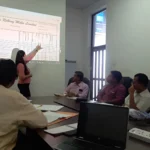ISO 14001 certification in Cape Town
Get Free Consultation
PopularCert assists Cape Town businesses in obtaining ISO 14001 certification in Cape Town , enhancing environmental management systems to meet international standards. This certification demonstrates a commitment to environmental responsibility, boosts customer trust, and provides a competitive edge in the market. By streamlining processes and fostering continuous improvement, ISO 14001 certification equips businesses to effectively navigate global challenges and seize new opportunities.
As environmental concerns grow globally, businesses in Cape Town have an added responsibility to protect this unique environment. ISO 14001 certification helps you play your part by adopting eco-friendly practices, reducing pollution, and conserving resources.
For many businesses, meeting environmental expectations is also a requirement to work with certain clients or enter specific markets. ISO 14001 provides a clear framework for meeting these expectations and demonstrating your commitment to eco-friendly practices.
How to Get ISO 14001 Certification In Cape Town?

Process to Get ISO 14001 Certification In Cape Town
Consultation and Gap Analysis
We start by understanding your current environmental practices. A gap analysis highlights areas for improvement, providing a clear roadmap to align with ISO 14001 standards.
Planning, Documentation, and Policy Development
Our team helps you create or update policies and procedures to meet ISO 14001 requirements. These documents are customized to suit your business and seamlessly integrate into your operations.
Training and Awareness
We provide training to ensure employees understand their roles in maintaining an effective EMS. Building awareness helps everyone contribute to your environmental goals.
Internal Audit and Management Review
Once your EMS is in place, we conduct an internal audit to assess its effectiveness. A management review ensures the system aligns with your objectives and meets ISO standards.
External Certification Audit and Certification
We work with an accredited certification body to complete the external audit. After certification, we continue to support your business with updates and guidance for maintaining compliance.
Benefits Of ISO 14001 Certification In Cape Town
- Lower Environmental Impact: ISO 14001 helps you identify and reduce your environmental footprint. This includes managing waste, conserving energy, and minimizing harmful emissions.
- Cost Savings: By using resources efficiently and reducing waste, you can save money on utilities, raw materials, and disposal costs. Environmental efficiency often leads to financial efficiency.
- Legal Compliance: Environmental laws and regulations can be complex. ISO 14001 helps you stay compliant, reducing the risk of fines or legal issues while building trust with authorities.
- Improved Reputation: Certification demonstrates your dedication to protecting the environment, boosting your credibility with customers, investors, and the community. A green reputation can attract eco-conscious clients and partners.
- Competitive Advantage: Being ISO 14001 certified sets you apart from competitors who may not have such credentials. It positions your business as a responsible and forward-thinking organization.
Types Of ISO Certification In Cape Town
Get Free Consultation
Our Clients


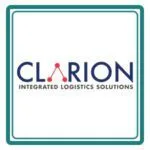



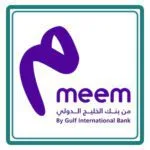




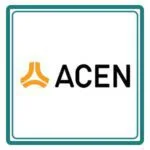




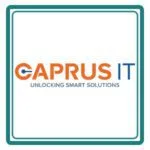

Cape Town’s Green Economy and Compliance Landscape
Cape Town is spearheading the transition to a circular, green economy as South Africa’s legislative and environmental center for sustainability innovation. ISO 14001 Certification in Cape Town is more than just an international standard for companies functioning in this forward-thinking environment; it’s a means of maintaining compliance, competitiveness, and environmental responsibility.
The Significance of ISO 14001 in the Regulatory Environment of Cape Town
National frameworks such as the National Environmental Management Act (NEMA) and local laws outlined in the City of Cape Town’s Integrated Development Plan (IDP) serve as the guidelines for environmental oversight in Cape Town. As a result, industries must implement proactive environmental controls, strategies to reduce pollution, and responsible resource management.
Businesses require organized systems to demonstrate compliance with the growing enforcement of Environmental Management Plans (EMPs) and Environmental Impact Assessments (EIAs) in industries such as manufacturing, logistics, and tourism. The framework that ISO 14001 offers enables businesses to keep an eye on their environmental impact, reduce risks, and meet regulatory requirements.
Endorsing the Green Growth Strategy of Cape Town
- With a strong emphasis on the following areas, Cape Town is quickly moving toward a low-carbon, resource-efficient economy:
- Sustainable water management, particularly after Day Zero in 2018
- Adoption of renewable energy
- Conscientious recycling and waste management
- Sustainable production and urban growth
Businesses can align with the Western Cape Green Economy Strategy Framework with the help of ISO 14001 certification, which allows for quantifiable improvements in:
- Use of energy
- Efficiency of water use
- Minimization of waste
- Impact controls for soil and air
Businesses with ISO 14001 in place are also better positioned to meet international ESG (Environmental, Social & Governance) standards set by foreign clients and investors, take part in green public procurement tenders, and secure funding for sustainability upgrades.
Cost Of ISO 14001 Certification In Cape Town
The cost of ISO 14001 certification depends on factors like the size of your business, industry, and current environmental practices. At PopularCert, we offer tailored, cost-effective solutions to make certification accessible for businesses of all sizes.
Drive consistent quality with ISO 14001 Certification in Cape Town. Learn how to get and apply for ISO 14001 certification with expert consultants who offer practical, efficient solutions tailored to your needs at an affordable cost.
Why Choose PopularCert For ISO 14001 Certification In Cape Town?
By achieving certification, you’ll protect the environment, improve efficiency, and strengthen your reputation.
At PopularCert, we simplify the certification process, making it easy and stress-free. Contact us today at [email protected] to get started. Let’s help you make a positive impact on Cape Town’s environment and beyond!
Real-World Application Across Cape Town
ISO 14001 benefits Cape Town businesses, whether they are wineries close to Stellenbosch, textile factories in Epping, or logistics companies in Montague Gardens:
- Observe sector-specific environmental regulations and local bylaws.
- Create a favourable brand image in line with the climate action objectives of the City of Cape Town.
- Prevent expensive operational inefficiencies and environmental penalties.
ISO 14001 is now a strategic requirement for Cape Town businesses hoping to prosper in a future-focused, environmentally conscious market due to increasing pressure from regulators, customers, and international trading partners.
GET A FREE CONSULTATION NOW
FAQ
What is ISO 14001 certification?
ISO 14001 is an international standard for Environmental Management Systems (EMS). It provides a framework for organizations to manage their environmental responsibilities effectively.
Why is ISO 14001 important for businesses in Cape Town?
ISO 14001 certification helps businesses reduce environmental impacts, comply with regulations, improve resource efficiency, and enhance their reputation in Cape Town’s environmentally conscious market.
How can I get ISO 14001 certification in Cape Town?
To achieve ISO 14001 certification:
- Understand the requirements of the standard.
- Develop and implement an Environmental Management System (EMS).
- Train employees on environmental practices and policies.
- Conduct internal audits and resolve any non-conformities.
- Apply for certification with an accredited certification body.
What is process of ISO certification in Cape town?
The process includes Gap analysis, Awareness Training, Document support, Internal Audit, MRM and Final audit.
How can I apply for ISO 14001 certification?
- Choose an accredited certification body, implement the EMS, and submit your application. Consultants can assist with the preparation and certification process.






